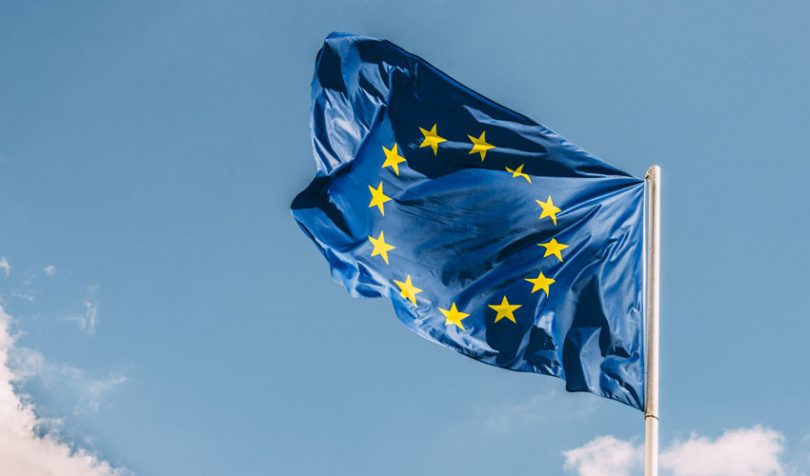The European Union Science Hub published its ‘Blockchain Now and Tomorrow’ report on the state of distributed ledger technology (DLT). The document outlines various use cases and aims to provide an understanding of the technology beyond the hype, supporting the European policymaking process.
China leads in blockchain startups
The publication states that blockchain is “one of the technologies which is anticipated to have a profound impact over the next 10-15 years,” partly due to an increase of investment in blockchain startups. From €450 million in 2014 to €3.9 billion in 2017, it increased rapidly to €7.4 billion in 2018.
The report finds that in 2018, China has taken an impressive lead in the global number of DLT startups. China was the only reported nation to accelerate the number of startups from 2017-18. In 2018 over 130 companies started in China, almost double the number that were setup in the U.S.. Europe lagged behind with less than 20 per country. However, in terms of cumulative ventures, the U.S. still leads China by a small margin. In terms of sector focus, across the U.S., EU and Rest of World, over 70% of startups are in financial services or software.
The researchers also single out Switzerland, Singapore, South Korea, and Japan for their “dynamism” in blockchain projects. Of EU countries, the UK accounts for nearly half of the established startups and around 70% of blockchain investments.
Blockchain and policy
A crucial part of ‘Blockchain Now and Tomorrow’ is the confirmation that European policymakers are actively working on blockchain solutions. The European Commission (EC) is “supporting multi-stakeholder [DLT] initiatives that gather industry, startups, governments, international organisations and civil society.” These initiatives cover a wide range of applications, such as accessing regulated data, real-time reporting, identity management, and supply chain.
Suggestions for blockchain transformation in the public sector are also outlined, with benefits described as “tailored services for specific citizens, greater trust in governments and improved automation, transparency and auditability.” One example given is a blockchain-based government identity system, like that recently launched by Catalonia.
However, challenges remain…
Though it’s clear the EU sees the potential of blockchain, its report warns that there are still challenges in building DLT solutions. It states that the idea of blockchain as a ‘one size fits all’ technology is incorrect. In other words, “challenges of deploying blockchain technology are strongly related to context, application or sectorial issues.”
“That is why organisations should not develop solutions looking for problems, but instead should find existing or foreseeable problems in their operations or business, and then look for possible blockchain solutions,” the report continues.
For instance, DLT in the public sector “is neither transformative or even disruptive […] as it is often portrayed.” This is due to complex integration with legacy systems, the need for centralization, and scalability.
Perhaps this explains the report’s forecast of 10-15 years for profound blockchain impact, which is beyond many existing predictions. It considers the technology to be at the “embryonic stage” facing issues like power consumption and interoperability.
However, with collaboration and open environments such as regulatory sandboxes, these issues can be overcome, the document explains: “Blockchain applications can have far-reaching implications at policy, economic, social, technical, legal or environmental level.”
“Potential changes, for example, in economic and business models, governance mechanisms or trust between parties, can only be grasped through a mix of different areas of knowledge, including computer science, economics, law, public finance, environmental sciences, and social and political sciences,” the report concludes.
The report was presented at the OECD Blockchain Forum on Friday ahead of its official launch in October, the report is now available online. A team of 14 academics at the Joint Research Centre (JRC) wrote the document. ‘Blockchain Now and Tomorrow’ can be seen as a sign of the EU’s recognition of the importance of DLT. Indeed, “The growth and increasing attention to blockchain technology has not gone unnoticed at EU policy level,” the report reads.






